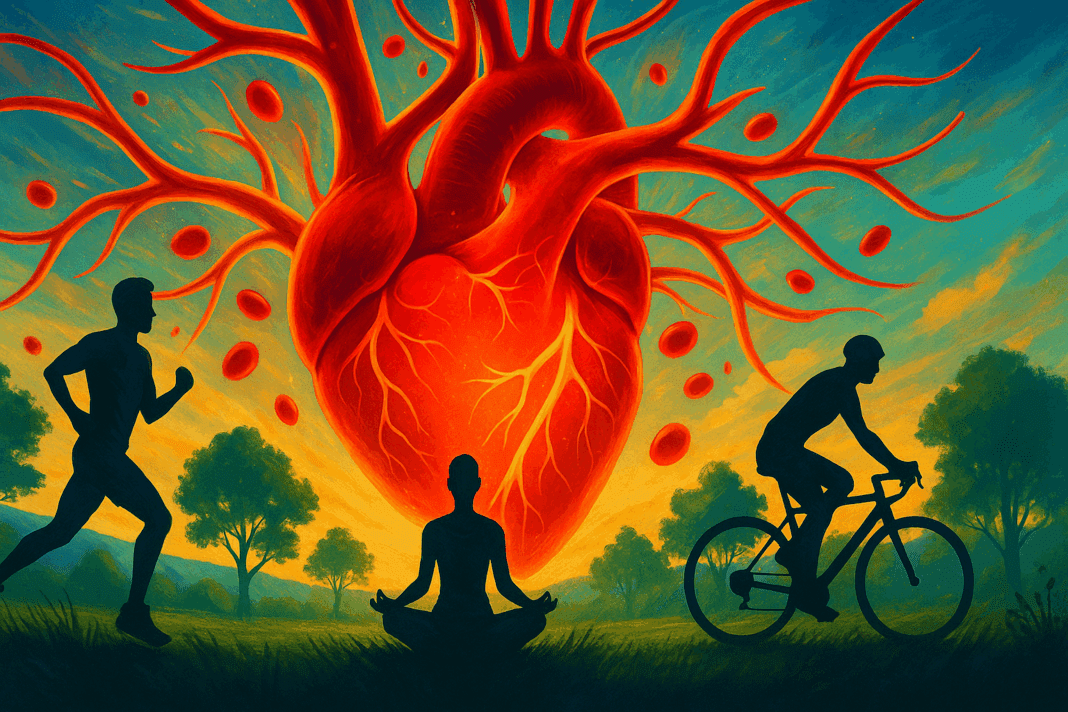Optimizing cardiovascular health is one of the most powerful actions individuals can take to enhance their energy, athletic performance, and long-term well-being. A strong cardiovascular system improves oxygen delivery throughout the body, supports efficient energy production, and reduces the risk of chronic disease. At the core of cardiovascular fitness lies the heart, a dynamic muscle that thrives on consistent, appropriate stimulation. Understanding how to improve cardiovascular health and how to naturally raise heart rate in a safe and effective manner requires more than surface-level tips. It demands an exploration of science-based methods, practical lifestyle changes, and exercise strategies that align with the body’s physiological rhythms.
For individuals seeking both endurance and performance enhancement, learning how to increase pulse rate immediately or how to get heart rate up during workouts can be essential. At the same time, understanding how to exercise to lower resting heart rate and how to improve heart beat strength at rest contributes to long-term cardiovascular resilience. This comprehensive guide draws on expert insights to explore the interconnection between heart rate regulation, cardiovascular conditioning, and performance optimization, while also addressing how to strengthen heart muscles naturally and what practices truly help improve heart health.
You may also like: Smart Nutrition Choices for a Healthier Lifestyle: What to Know About Whole Grain Rice and Whole Wheat Rice
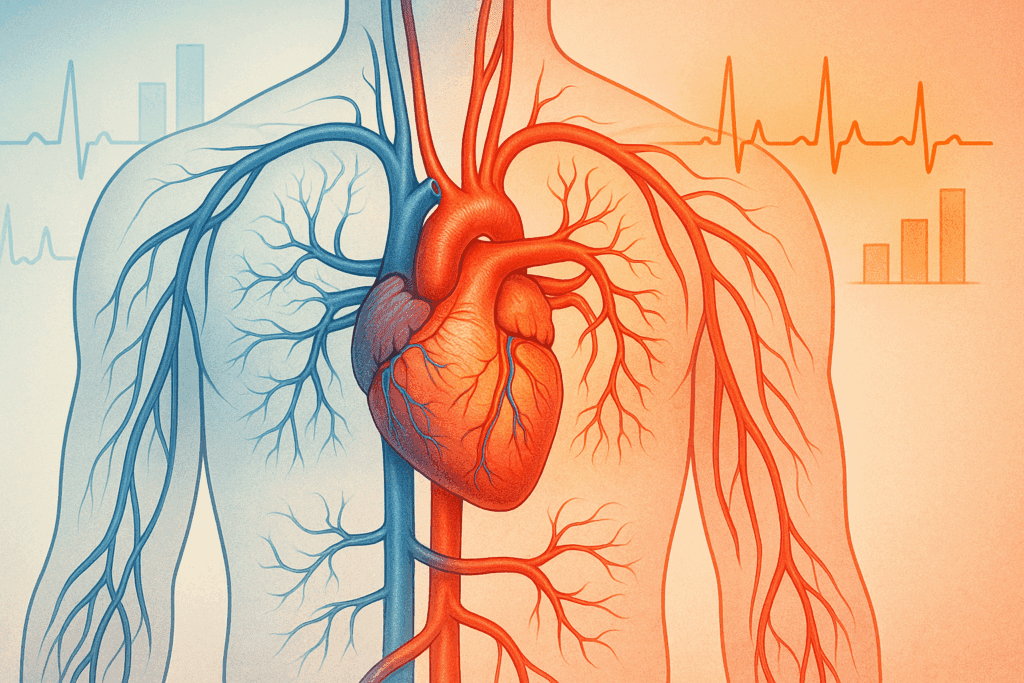
The Physiology Behind Cardiovascular Performance and Heart Rate Regulation
At the foundation of cardiovascular health is the heart’s ability to contract efficiently and rhythmically. Heart rate reflects the number of times the heart beats per minute and is influenced by factors such as activity level, stress, hydration, body temperature, and overall fitness. When evaluating how to improve cardiovascular health, understanding the role of heart rate as a biofeedback tool becomes essential. A lower resting heart rate often indicates efficient cardiac output and robust parasympathetic nervous system activity, while a higher resting rate can signal stress, deconditioning, or potential cardiovascular issues.
Knowing how to boost heart rate safely and how to increase heart rate naturally depends on recognizing the body’s response to various stimuli. For instance, during aerobic exercise, heart rate increases to meet the oxygen demands of working muscles. This dynamic interaction between physical activity and heart rate adjustment is what makes targeted training effective for endurance athletes and fitness enthusiasts alike. It also forms the basis for understanding how to strengthen heart muscles naturally through proper training regimens.
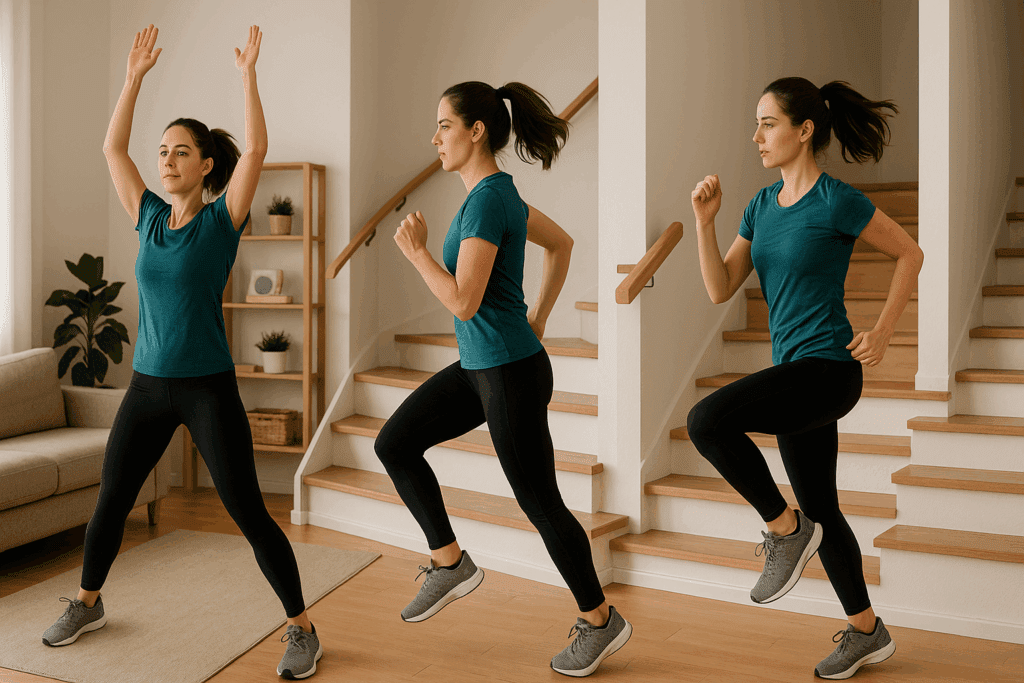
Short-Term Tactics: How to Increase Pulse Rate Instantly and At Home
In certain scenarios, such as pre-workout warm-ups or clinical conditions requiring increased circulation, people may ask how to increase pulse rate immediately. The key is to stimulate the sympathetic nervous system in a controlled way. Brisk movement such as jumping jacks, high knees, or stair climbing can increase heart rate within seconds. For those wondering how to increase pulse rate immediately at home, these simple exercises are accessible, safe, and effective for stimulating cardiovascular activity.
Deep breathing combined with gentle movement can also help gradually raise the pulse, particularly in those with lower cardiovascular tolerance. Using large muscle groups in compound movement patterns (e.g., squats with arm swings) is an effective strategy. For people with fitness goals, understanding how to get heart rate up efficiently can enhance workout intensity, improve conditioning, and support fat-burning goals. These techniques can also serve as warm-up practices that prime the heart and circulatory system for more structured aerobic sessions.
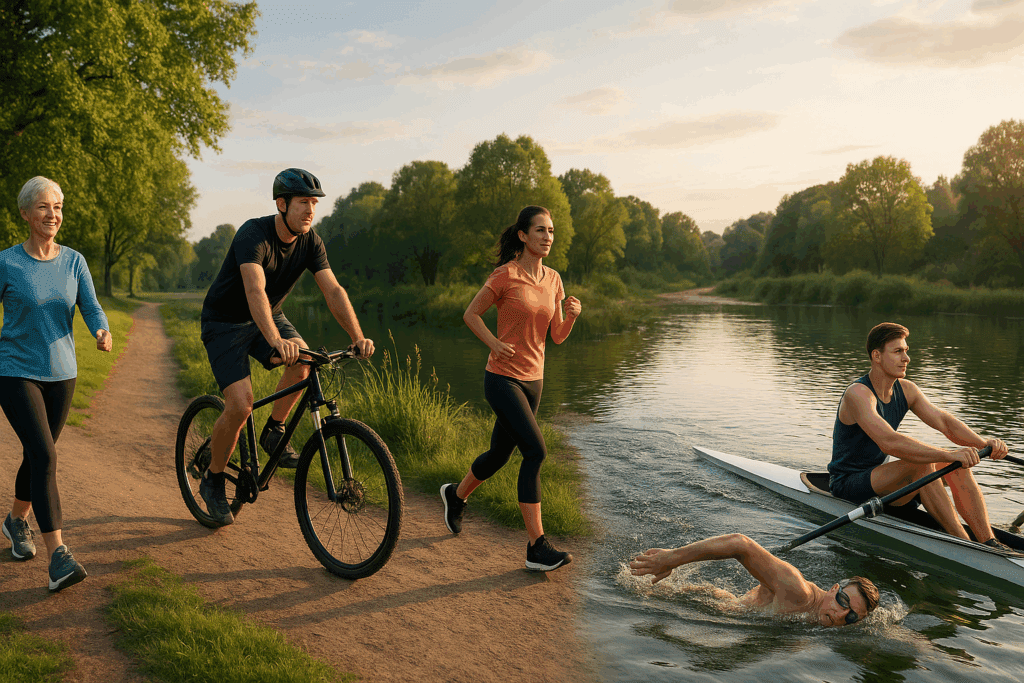
Aerobic Conditioning: The Best Exercises to Lower Resting Heart Rate Over Time
Long-term cardiovascular health benefits are best achieved through consistent aerobic conditioning. Activities such as running, brisk walking, swimming, cycling, and rowing are among the best exercise options to lower resting heart rate. These activities challenge the heart to pump more efficiently and build greater stroke volume—the amount of blood pumped with each beat. As cardiovascular fitness improves, the heart requires fewer beats to circulate the same amount of blood, which explains why highly trained athletes often have resting heart rates well below average.
When considering how to exercise to lower resting heart rate, it is important to focus on moderate-intensity efforts sustained over time. Ideally, aerobic workouts should last at least 30 minutes and be performed three to five times per week. For beginners, starting with lower-intensity sessions and gradually building up both duration and intensity can yield meaningful progress. In addition to formal workouts, increasing daily movement (e.g., walking instead of driving, using stairs instead of elevators) can also contribute to cardiovascular improvements and lower resting heart rate.

Building Cardiac Strength: How to Strengthen Heart Muscles Naturally
Beyond general aerobic conditioning, individuals can explore methods for how to strengthen heart muscles naturally. Resistance training, although traditionally associated with skeletal muscle development, also benefits cardiac function. Lifting weights at a moderate pace with proper rest between sets can lead to intermittent rises in heart rate, fostering cardiovascular adaptations. High-repetition, low-weight routines can be particularly useful for integrating cardiovascular effort into strength training sessions.
Interval training, where periods of high effort alternate with recovery phases, has emerged as one of the most efficient strategies to strengthen the heart. These short bursts of activity create strong cardiac demands, prompting the heart to adapt to higher workloads. Over time, these adaptations translate into improved cardiac efficiency and vascular flexibility. Understanding how can I improve my heart rate variability and responsiveness is closely linked with learning how to strengthen heart muscles through varied and strategic movement.

Natural Lifestyle Approaches: Diet, Sleep, and Stress Reduction
Cardiovascular health is not solely shaped by physical activity. Diet, sleep, and emotional well-being play pivotal roles in heart performance and regulation. Nutritional choices that support vascular integrity and anti-inflammatory balance can significantly impact how to improve cardiovascular health. Diets rich in omega-3 fatty acids, leafy greens, colorful vegetables, whole grains, and lean proteins are associated with reduced arterial stiffness, lower cholesterol levels, and improved blood flow.
Hydration also influences how to increase heart rate naturally. Dehydration can cause the heart to work harder, leading to a higher resting heart rate and reduced efficiency. Sleep quality, often underappreciated, directly impacts resting heart rate and recovery. A consistent sleep schedule, free from caffeine or blue light exposure before bedtime, can enhance parasympathetic tone and support cardiovascular balance. Furthermore, managing chronic stress through practices such as yoga, breathwork, meditation, or time in nature can reduce cortisol levels and help regulate the autonomic nervous system—factors that directly influence heart rate and long-term cardiovascular health.
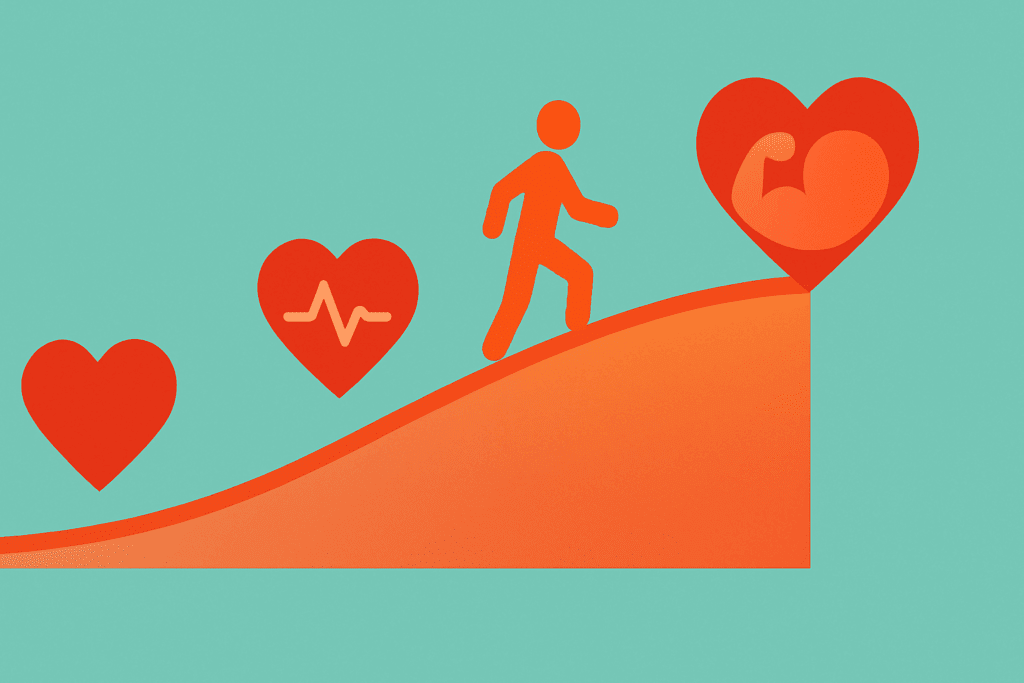
How Long Does It Take to Strengthen Your Heart?
Many individuals seek clear answers to how long does it take to strengthen your heart through exercise and lifestyle change. While the timeline varies based on starting fitness level, consistency, and training intensity, research suggests measurable improvements in cardiovascular function can occur within three to six weeks of regular aerobic activity. Increases in stroke volume, mitochondrial density, and oxygen transport efficiency have all been observed within this window.
For those aiming to lower resting heart rate or improve exercise capacity, more significant gains often emerge after 8 to 12 weeks of structured training. However, the body continues to adapt with ongoing effort. The heart, like any muscle, responds to progressive overload and varied stimulus. By maintaining a consistent training regimen and adopting lifestyle habits that support vascular health, individuals can see lasting changes in heart strength, endurance, and overall performance.
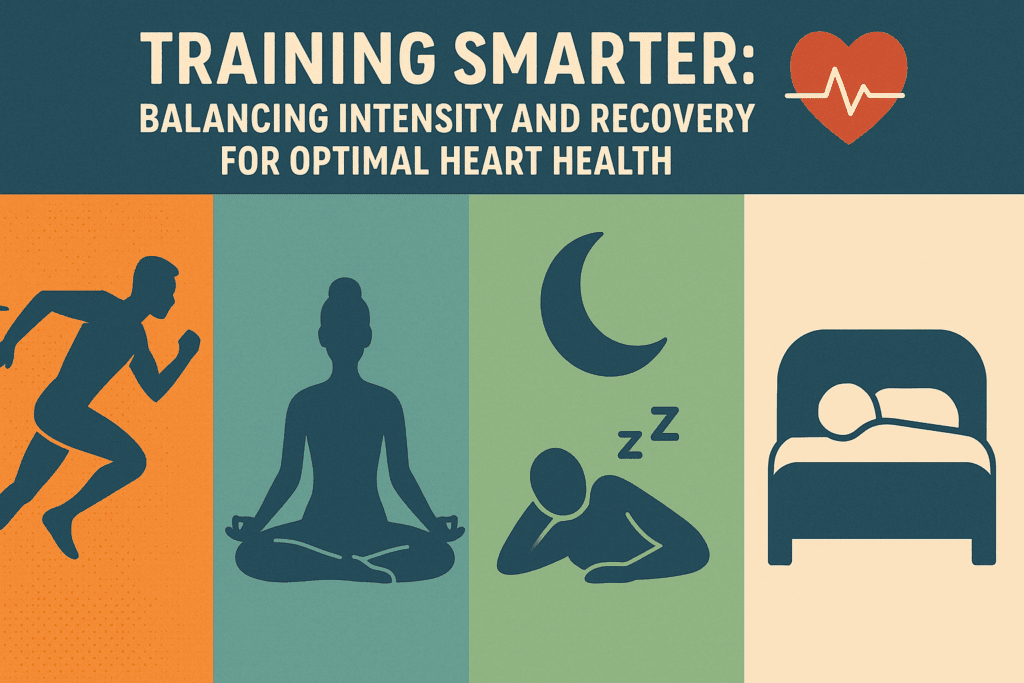
Training Smarter: Balancing Intensity and Recovery for Optimal Heart Health
While raising the heart rate during exercise is important, so is allowing adequate time for rest and recovery. Understanding how to improve heart beat rhythm and how to increase heart rate naturally without overstressing the body requires a nuanced approach. Alternating between high-intensity days and recovery-focused workouts such as walking, light cycling, or gentle yoga can prevent overtraining and support sustained progress.
Heart rate variability (HRV) is another valuable tool in understanding cardiovascular readiness and autonomic balance. Higher HRV is associated with greater recovery capacity and lower stress burden. Monitoring HRV can provide insight into when the body is primed for high-effort days versus when it needs rest. In this way, athletes and fitness enthusiasts alike can learn how to boost heart rate effectively on workout days while avoiding the pitfalls of pushing the body too hard, too often.
Real-World Applications: How to Naturally Raise Heart Rate for Daily Vitality
Even outside of structured workouts, people may benefit from knowing how to naturally raise heart rate in everyday life. Simple changes such as incorporating walking meetings, active commuting, or movement breaks throughout the workday can keep the circulatory system engaged. Light stretching, desk exercises, or short strolls can re-energize both body and mind while supporting long-term cardiovascular resilience.
For older adults or individuals with limited mobility, chair aerobics or water-based movement can be ideal ways to improve circulation and gently raise heart rate without excessive strain. Learning how to increase pulse rate instantly through controlled breathing techniques combined with gentle movement can also help those experiencing low energy or postural hypotension. These accessible practices demonstrate how cardiovascular training doesn’t require a gym—just mindful, consistent action.
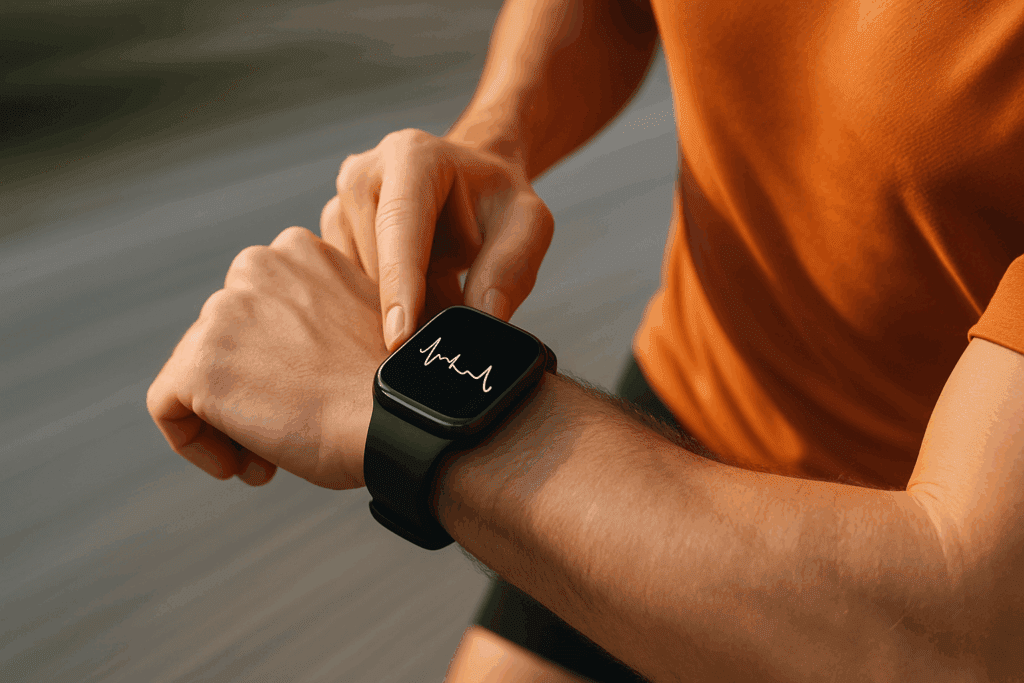
Integrating Technology: Tracking Progress and Encouraging Consistency
Wearable fitness technology has revolutionized the way individuals engage with their cardiovascular goals. Heart rate monitors, smartwatches, and mobile apps can help track how to get heart rate up during workouts, how to exercise to lower resting heart rate over time, and how long it takes to strengthen your heart. These tools provide real-time feedback, making workouts more effective and recovery periods more purposeful.
Biofeedback tools that track heart rate variability or sleep quality also allow users to make informed decisions about when and how to push their training. For those just beginning their cardiovascular journey, these devices can create a sense of accountability and motivation. For seasoned athletes, they offer insight into how to refine training strategies and protect long-term heart health. The integration of technology does not replace body awareness but enhances it, supporting intelligent adaptation and self-monitoring.
The Link Between Cardiovascular Training and Mental Clarity
Interestingly, improved heart health does more than enhance physical stamina. There is mounting evidence that better cardiovascular fitness supports mental clarity, emotional regulation, and cognitive resilience. As the heart becomes stronger and more efficient, cerebral blood flow increases, delivering more oxygen and nutrients to the brain. This explains the link between aerobic training and improved memory, mood, and executive functioning.
Endurance athletes often report feeling more focused and emotionally stable following a run or swim. This isn’t coincidence—it’s the physiological cascade of cardiovascular activation supporting neurological performance. Thus, learning how can I improve my heart rate and how to naturally raise heart rate is not just a physical pursuit; it’s also a gateway to sharper thinking and emotional balance. In this way, heart training becomes an integrated wellness strategy, influencing the mind as much as the body.
Frequently Asked Questions: How to Improve Cardiovascular Health and Naturally Raise Your Heart Rate
1. What are some overlooked ways to get your heart rate up without traditional exercise? While structured workouts are effective, everyday activities can also teach you how to get heart rate up efficiently. Engaging in active play with pets or children, dancing while doing housework, or even using standing desks with occasional pacing can elevate your pulse. Gardening and yard work, especially when it involves raking, digging, or carrying, offer functional movement that increases cardiovascular activity. These forms of spontaneous movement not only support how to increase pulse rate immediately at home, but also encourage consistency without the mental barrier of a formal workout. They offer a realistic approach for people looking to integrate fitness into daily life.
2. How can temperature and environmental factors influence heart rate naturally? Environmental conditions can significantly impact how to increase heart rate naturally. Exposure to cold can elevate heart rate as the body works to maintain core temperature, while high humidity can force the heart to pump harder to regulate body heat. Altitude also plays a role, as reduced oxygen levels prompt an increase in heart rate. If you’re exploring how to boost heart rate for cardiovascular benefits, even hiking at higher elevations or exercising in slightly warmer settings can stimulate these adaptations. However, it’s important to stay hydrated and avoid overexertion in extreme climates.
3. Can specific breathing techniques help increase pulse rate instantly or improve cardiovascular health over time? Yes, breath control can be surprisingly effective for those interested in how to increase pulse rate instantly. Fast-paced breathing practices like kapalabhati or “breath of fire,” used in yoga, rapidly stimulate sympathetic activity and elevate heart rate. On the other hand, controlled deep breathing through the diaphragm improves vagal tone and enhances heart rate variability over time. While these methods may not substitute for traditional aerobic exercise, they can complement how to strengthen heart muscles naturally through nervous system conditioning. This mind-body connection supports a holistic path to how to improve cardiovascular health.
4. Are there supplements or herbs that can support a healthy heart rate? Certain evidence-backed supplements may support efforts in how to improve heart beat regulation and cardiovascular function. Coenzyme Q10, magnesium, and omega-3 fatty acids have shown benefits in maintaining heart rhythm and lowering resting heart rate. Adaptogenic herbs like Rhodiola rosea and ashwagandha help modulate stress responses, which in turn can affect how to exercise to lower resting heart rate by promoting recovery. While supplements should never replace physical activity or diet, they can help optimize how can I improve my heart rate through targeted nutritional support. Always consult a healthcare provider before starting any new supplement.
5. How does mental health influence your ability to naturally raise or regulate heart rate? Mental health plays a pivotal role in how to improve cardiovascular health. Chronic anxiety or depression can lead to sustained elevations in resting heart rate due to overactivation of the sympathetic nervous system. Practicing mindfulness, cognitive behavioral therapy, and regular social interaction has been shown to regulate heart rhythm and improve autonomic balance. Understanding how to naturally raise heart rate in a controlled manner—especially in those with flat emotional affect or burnout—can also involve rekindling passion for activities that bring joy or excitement. Mental engagement and emotional expression are deeply tied to how to improve heart beat strength and variability.
6. What role does hydration play in increasing pulse rate and cardiovascular efficiency? Dehydration often goes unnoticed, but it directly affects how to get heart rate up safely and how to increase heart rate naturally. When fluid levels drop, blood volume decreases, causing the heart to work harder to maintain circulation. This strain can increase pulse rate while reducing cardiovascular efficiency. Sufficient hydration ensures optimal blood flow and supports nutrient delivery to the myocardium, aiding in how to strengthen heart muscles naturally. Athletes and active individuals should pay special attention to electrolyte balance to avoid erratic spikes in heart rate.
7. How can wearable technology improve your ability to strengthen heart muscles naturally? Fitness trackers and heart rate monitors are powerful tools for those looking at how to strengthen heart muscles naturally and track improvements in real time. These devices offer biofeedback that helps tailor workouts to stay within target heart rate zones, enhancing aerobic capacity without overtraining. Features that monitor sleep, stress, and heart rate variability give additional insight into how to improve heart beat regulation during recovery. For those interested in how to increase pulse rate immediately during exercise, live monitoring allows quick adjustments in intensity. Over time, these insights support smarter training decisions and reduce cardiovascular risk.
8. Is it possible to lower resting heart rate too much through excessive training? Yes, and it’s a concern particularly among endurance athletes. While one goal of cardiovascular conditioning is learning how to exercise to lower resting heart rate, going too far can lead to symptoms like dizziness, fatigue, or poor circulation. This condition, known as bradycardia, can be benign in some athletes but problematic if it leads to poor perfusion. The best exercise to lower resting heart rate must also include recovery periods and strength training to ensure overall balance. Understanding how long does it take to strengthen your heart should include respect for physiological limits and appropriate periodization in training programs.
9. Are there cultural or lifestyle practices from around the world that help people naturally raise heart rate and support cardiovascular wellness? Absolutely. In Nordic countries, alternating sauna and cold plunge sessions stimulate the vascular system, supporting how to increase pulse rate immediately while enhancing circulatory flexibility. In Asia, practices such as tai chi and qigong integrate mindful movement with breath control to improve how to boost heart rate gently and sustainably. In Latin cultures, dance remains a joyful way to improve cardiovascular endurance while learning how to get heart rate up without monotony. These traditions reveal that how to improve cardiovascular health can often be embedded in everyday living, not just gym sessions.
10. What are early signs that your efforts to improve heart rate and cardiovascular health are working? Improvements often manifest in subtle yet empowering ways. You may notice better stamina during daily tasks, quicker recovery after workouts, and reduced feelings of breathlessness under stress. If you’re actively working on how to increase pulse rate instantly for training or how to exercise to lower resting heart rate, objective signs include more consistent energy levels, deeper sleep, and improved mood. Gradually, you’ll observe that activities requiring exertion no longer feel taxing, a strong sign that your efforts on how can I improve my heart rate are paying off. Regular check-ins with wearable devices or periodic fitness assessments can also validate progress, reinforcing motivation.
Conclusion: Strengthen Your Heart, Elevate Your Life with Natural Strategies
Improving cardiovascular health is not about extreme measures or unsustainable routines. It’s about understanding the body’s rhythms, responding with intelligent movement, and choosing lifestyle habits that promote lasting wellness. Whether you’re an endurance athlete, a busy professional, or someone simply looking to feel more energized, learning how to improve cardiovascular health and how to increase heart rate naturally can transform your physical and mental performance.
By exploring techniques for how to boost heart rate, identifying the best exercise to lower resting heart rate, and mastering how to strengthen heart muscles naturally, you lay the foundation for a more resilient, vibrant body. Whether you need to know how to increase pulse rate immediately at home or how to exercise to lower resting heart rate over the long term, the strategies in this article offer a research-backed path forward. Most importantly, they affirm that cardiovascular fitness is not a destination but a daily commitment—one that can be joyful, empowering, and deeply rewarding.
Was this article helpful? Don’t let it stop with you. Share it right now with someone who needs to see it—whether it’s a friend, a colleague, or your whole network. And if staying ahead on this topic matters to you, subscribe to this publication for the most up-to-date information. You’ll get the latest insights delivered straight to you—no searching, no missing out.
Further Reading:
30 ways to Improve Your Heart Health Naturally
7 powerful ways you can strengthen your heart
5Health-Related Fitness Measures for Youth: Cardiorespiratory Endurance

